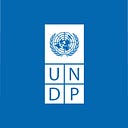Facing complex challenges in Uruguay
Governments face increasingly complex challenges that defy single solutions. In many cases, what worked in the past may no longer suffice. To address this, UNDP is exploring emerging, integrated approaches that are better aligned with the development needs of governments and citizens.
In Uruguay, prompted by a major new foreign investment in the pulp industry, we’re working with the government to test this approach.
In July 2019, Uruguay and the Finnish multinational UPM signed a US$3.3 billion agreement to build a greenfield eucalyptus pulp mill near Paso de los Toros. Some investment will go toward upgrading a port facility and railway tracks, for which Uruguay has taken out a US$1 billion loan. Three forestry areas in northern Uruguay are also under development.
Depending on whom you ask — investors, activists, or government officials — you’ll find a range of views on the potential benefits of this investment. Some say it will increase economic output by 1.5 percent, raise the annual value of exports by roughly 12 percent as pulp overtakes beef and soybeans, and employ more than 6,000 people during construction. Others say it will produce only 400 new permanent jobs, damage the environment, and yield too few social and economic benefits to justify concessions to its private sector partner.
Inarguably, though, the UPM deal reinforces Uruguay’s longstanding economic model — based on extractive, commodity-led growth, foreign direct investment, and the export of primary products. And that’s risky.
Addressing these challenges is a strategic bet for the government, as it seeks to create conditions for long-term development based on diversification, local knowledge, and sound environmental policies.
UNDP’s role
With less than a decade to achieve the Sustainable Development Goals (SDGs), UNDP is working with partners to devise innovative, integrated solutions to such complex challenges.
The last two years have seen investments in a range of potentially game-changing initiatives, such as our network of 60 Accelerator Labs, Finance Sector Hub, and Digitization Strategy. The aim is to help governments address unprecedented development challenges in an era of destabilizing climate change and seismic shifts in technology.
Our work in Uruguay highlights our new approach to development.
Redesigning our approach
The limitations of traditional, centrally-led planning are well known. In Uruguay we set out to find a better way, putting well-being and environment at the centre.
We borrowed from Sitra, the Finnish Innovation Fund, and applied its studio approach, deploying a team of eight people, with expertise ranging from strategic design and impact investment to land-use planning, social protection, water conservation, climate economics, complexity, forecasting, and extractive industries.
For seven days in December, we devised a new framework that outlined the ‘architecture of the problem’ and identified a top 10 list of opportunities to shift the economic base away from extractives. These were presented to the government and other national counterparts.
We didn’t consider pulp mill construction and railway upgrades in isolation but in a much broader context — from extraordinarily low high school graduation rates to the rising number of cities where retirees outnumber workers. We asked above all how to leverage this new investment to deliver profound transformation toward a sustainable, digital, knowledge-based economy.
Could a studio intervention help support the country deliver on a new kind of transformative agenda? Here we were inspired by Harvard’s Growth Lab and its Atlas of Economic Complexity, MIT’s Observatory Of Economic Complexity, and Climate KIC “directional innovation” work, shifting from single-point solutions to much broader innovation.
Our portfolio cuts across government, business, academia, and society and addresses scale, time, and resources. A few examples:
- Transforming Paso de los Toros into a more inclusive city friendly to all ages, a sort of urban laboratory aimed at better serving its fast-changing population;
- Launching a large-scale civic engagement CoDesign Forum, which takes a page from the Chilean Sustainable Reconstruction Plan which followed the 2010 earthquake. This would aim to meet the needs of communities affected by Uruguay’s UPM investments.
- Implementing so-called future-proof procurement to stimulate new markets and create new jobs and opportunities through local, sustainable, healthy, and low-carbon food to all public schools — largely from female-led or low-carbon businesses.
Other ideas included a ‘Fiscal Stabilization Fund’ business support structure of ‘Mujeres Innovadoras’ and ‘Municipal Tech Booth camps’ and regional R&D partnerships ‘Tacuarembo and Durzano Technology Hubs.’
In the coming weeks and months, we will work with the Government to take these proposals into multiple sectors and domains.
“The country has had a good run, but it now faces diminishing returns. Both internal and external dynamics increasingly demonstrate that the easy phase of extractive, commodity-led growth based on large foreign direct investment is over. Don’t interpret the current slowdown as the end of a cycle; we believe this should be seen as the end of an era. This is not just about a company’s investment in the country — it’s about building Uruguay’s future.”- UNDP Future Uruguay studio team.
Implications for development organizations
The studio approach responds to development challenges that are complex, interdependent, and ambiguous.
We’re making a strategic bet that deep, transformational change requires a fundamental organizational renewal. In Uruguay and other UNDP teams, we’re finding out what this new way of working may entail.
For more on integrated solutions, visit https://sdgintegration.undp.org/.
By Stefan Liller, UNDP Uruguay Resident Representative, Milica Begovic, UNDP Global Innovation Adviser (a.i.) and Marco Steinberg, Founder & CEO, Snowcone & Haystack
Photos: UNDP Uruguay/Martín Illescas
